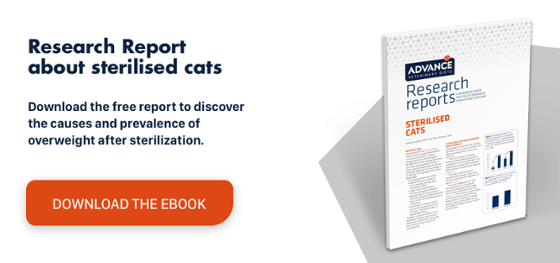Cat sterilisation campaigns
It is cheaper to sterilise cats than to have them breed and then care for their offspring. Allowing them to be born with no intention of looking after them, but rather abandoning them, is irresponsible. Sterilisation is a preventive action that, besides improving the pet’s quality of life, helps to keep the cat population under control.
Sterilisation myths
Sterilisation campaigns are essential for raising awareness of its benefits and educating owners by debunking false myths based on ignorance:
- Sterilisation does not predispose cats to obesity. Sterilised cats do not gain weight if their intake is controlled with a specific diet and they continue to engage in physical activity.
- It does not change the animal’s character. However, it can solve aggressiveness associated with high levels of testosterone in males.
- Females do not have to breed at least once in their lifetime. Their sexuality is dictated purely by hormones, so they do not experience frustration. Sterilisation is safe and effective when performed in kittens. The procedure must be carried out, whenever possible, before the cat reaches sexual maturity (usually around 6 months old) to prevent an unplanned pregnancy.
Benefits of sterilisation in cats
There are explicit reasons why vets recommend sterilisation to cat owners:
- Female cats have induced ovulation, that is, their ovulation is produced by a stimulus: being mounted. Oestrous takes place in spring and continues until autumn. When female cats kept indoors cannot mate, they look for a male incessantly and produce annoying vocalisations.
- In females, there is also less risk of diseases related to the ovaries or uterus, such as polycystic ovaries, pyometra or metritis. Females are less likely to suffer hormone-induced diseases, e.g., mammary tumours or phantom pregnancies.
- In male cats, sterilisation can prevent or correct certain behaviours, such as territorial aggressiveness, urine marking and running away when females are in oestrous (which can result in the cat being lost, run over, etc.)
- It also reduces the possibility of testicular cancer and testosterone-induced diseases, such as adenomas, perianal hernias, prostatitis or benign prostatic hyperplasia.
In both sexes, sterilisation prevents the spread of transmittable diseases, including feline leukaemia and feline immunodeficiency virus.
What are the options?
Vets should advise owners on the best method. Sterilisation is best performed in a veterinary clinic. While it is a minimally invasive procedure, it should be noted that any intervention with anaesthesia involves risks and must be carried out with the appropriate equipment.
TYPES OF SURGICAL STERILISATION:
- Ovariohysterectomy: surgical removal of the ovaries and uterus from the abdominal cavity. Once the uterus has been removed there is no chance of infection and therefore pyometra.
- Ovariectomy: a more straightforward technique than an ovariohysterectomy. Only the ovaries are removed, while the uterus is left intact. Performing ovariectomy before the first oestrous further decreases the risk of mammary cancer.
- Hysterectomy: partial or total removal of the uterus. In this case the cat is unable to reproduce but continues to produce hormones.
- Orchiectomy: removal of the testicles and therefore the capacity to produce sex hormones. An orchiectomy can be done at 6 months, but it is better to wait until male cats are fully developed at around 8 months.
- Vasectomy: cats can continue their sexual life without procreating. A vasectomy involves cutting the vas deferens and preventing semen from passing through the urethra. In males, surgery usually lasts approximately 10 minutes, and in females, about15–20 minutes, depending on the technique employed by each veterinary surgeon. Cats recover in 24–48 hours and require minimal postoperative care, so they return to their normal life in a very quickly.

